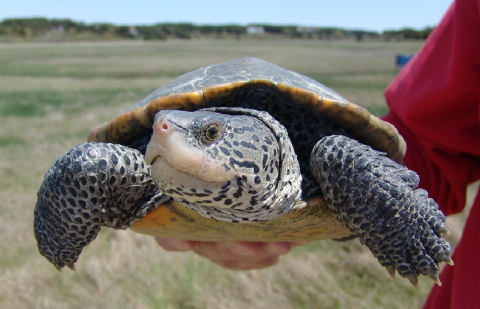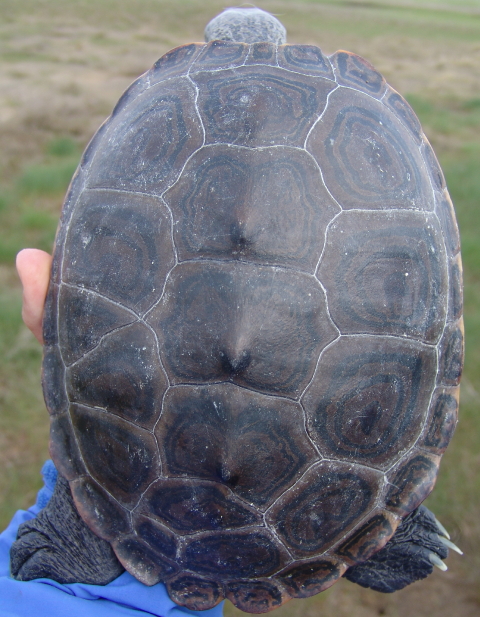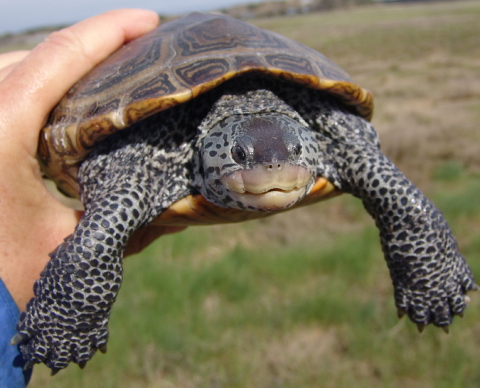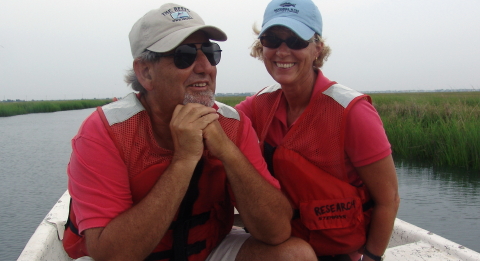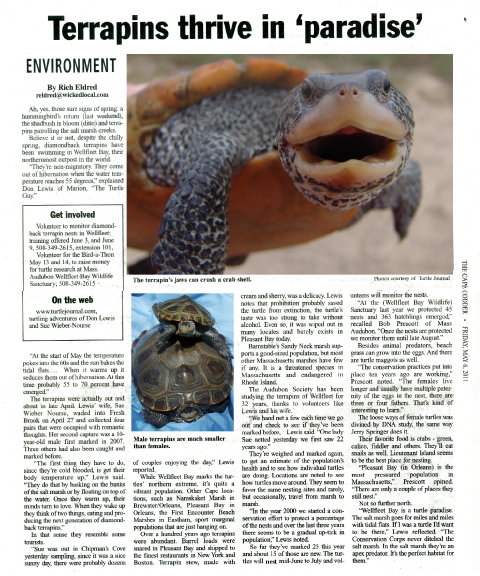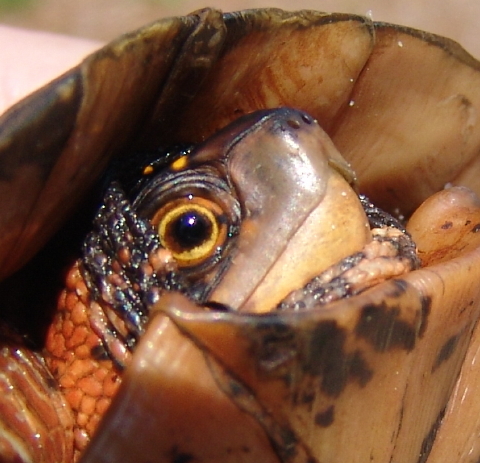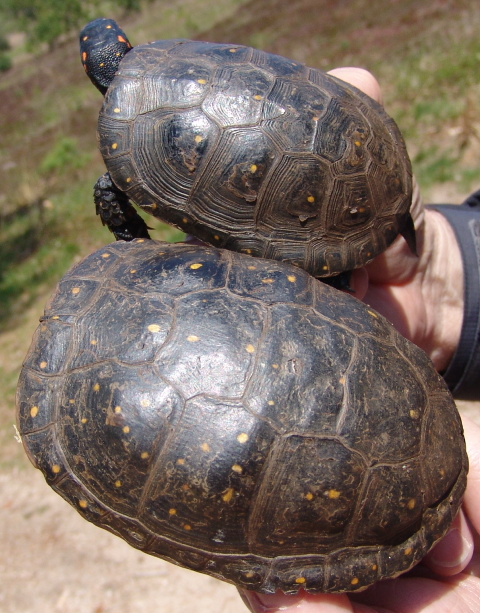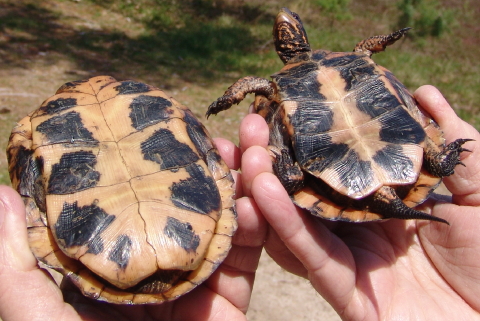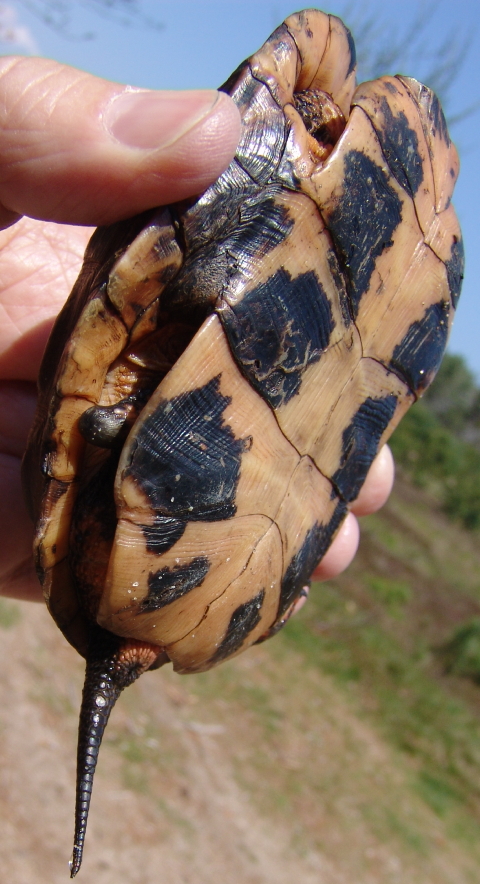Female Terrapin #86 — Wellfleet’s Grande Dame
The Northern Diamondback Terrapin (Malaclemys terrapin terrapin) research project in Wellfleet Bay has entered the 32nd year of this unique longitudinal study. Since each captured specimen receives an individual identification number, we have been able to observe and document some of these turtles for more than three decades. For instance, Terrapin #86 is the official “Grande Dame of Wellfleet Bay” diamondback terrapins. She was captured on the very first day of this research project on 20 June 1980. Back then she was already an “ancient” female. Yet, when she was recaptured and photographed above in May 2009, #86 was cavorting in Fresh Brook Run with a dashing 8-year-old male, prompting our headline story in Cape Cod Today to ask, “When is a turtle a cougar?“ (Click on the title to read this informative and amusing story.)
Female Diamondback Terrapin #1900
Beyond the powerful scientific results that such a continuous long-term study of a protected species provides, Turtle Journal freely admits that we simply enjoy the stories that these terrapins tell as each capture in succession fills in details of their lives, of their histories and of their survival. For instance, Terrapin #1900 was captured by Sue Wieber Nourse on Friday. Don Lewis had originally marked this mature female during a nesting run on Lieutenant Island in June 2003.Â
Diamondback Terrapin #1900 with Scute Anomalies
As you can see from the photograph above, Terrapin #1900 is easily recognizable by the unique scute anomalies on her carapace.  Like the movie character in The Legend of 1900, our #1900 never seems to leave Lieutenant Island and its immediate vicinity.  She comes ashore twice each year, in June and July, to lay nests on the south side of Lieutenant Island. When she’s not on nesting runs, #1900 remains in the tidal flats south of Lieutenant Island for brumation, foraging and mating.  She’s a captive of her local environment akin to her Legend of 1900 analog. As Wellfleet turtles go, Terrapin #1900 is the exception rather than the rule. Detailed migration patterns revealed over 32 years of records demonstrate how diamondbacks crisscross Wellfleet Bay to exploit various aspects of this rich estuary system for foraging, mating, nesting and brumating.
Female Diamondback Terrapin #2874
Four other terrapins that Sue captured on the 13th revealed stories about where they’ve been and how they use the estuaries, the uplands, the tidal flats and the salt marshes of Wellfleet Bay in order to sustain the strongest population of this threatened species in Massachusetts. As has been revealed often in the pages of Turtle Journal, these individual stories weave together an epic tale of how terrapins migrate throughout the bay’s estuaries to exploit the full bounty of this northernmost habitat in the world for diamondbacks.
Terrapin #1900 and Friends
After scientific processing and epic storytelling, these Wellfleet legends head back into Fresh Brook Run led by #1900 for a little more springtime cavorting. With any luck, we’ll see several of them again when nesting seasoon begins in four more weeks.
